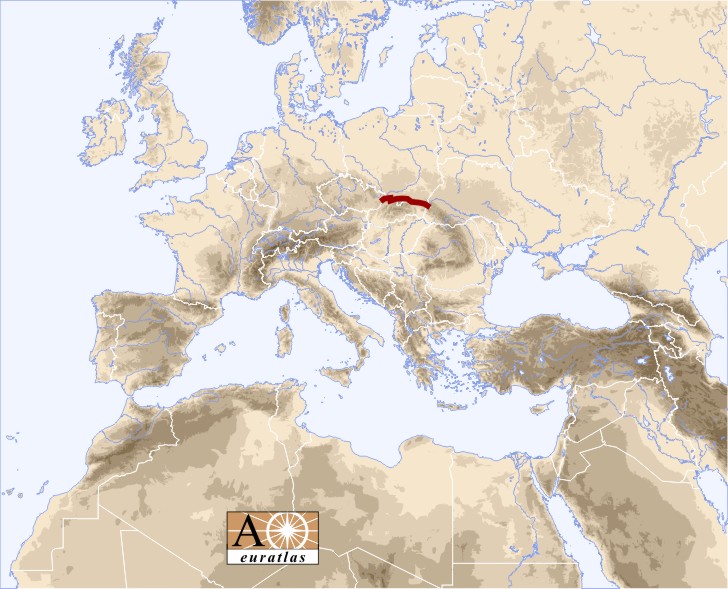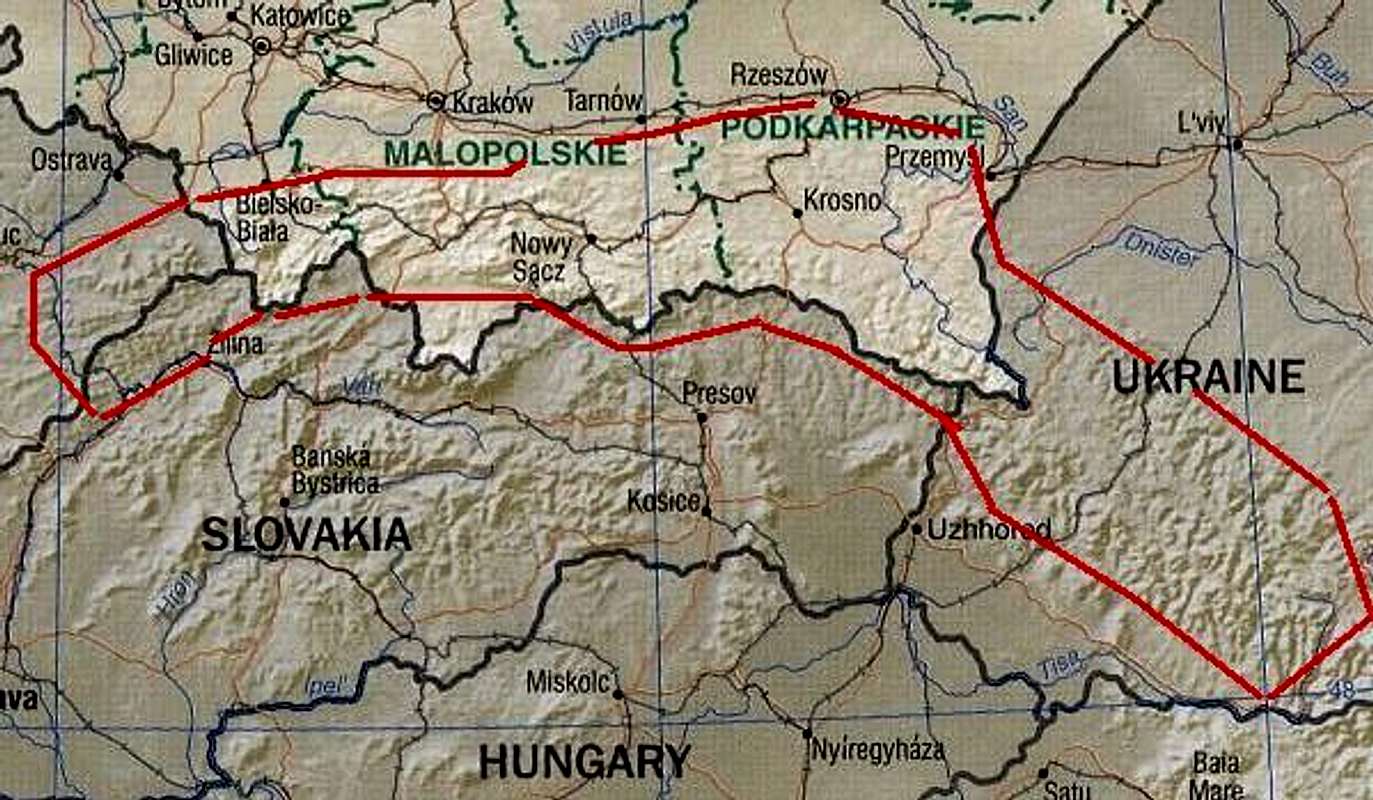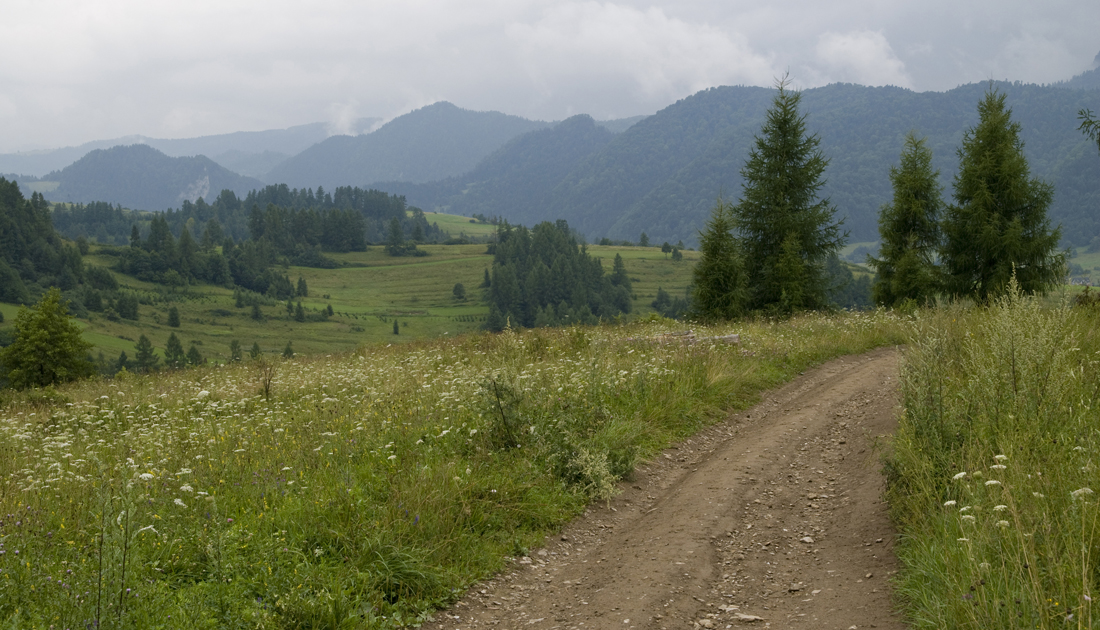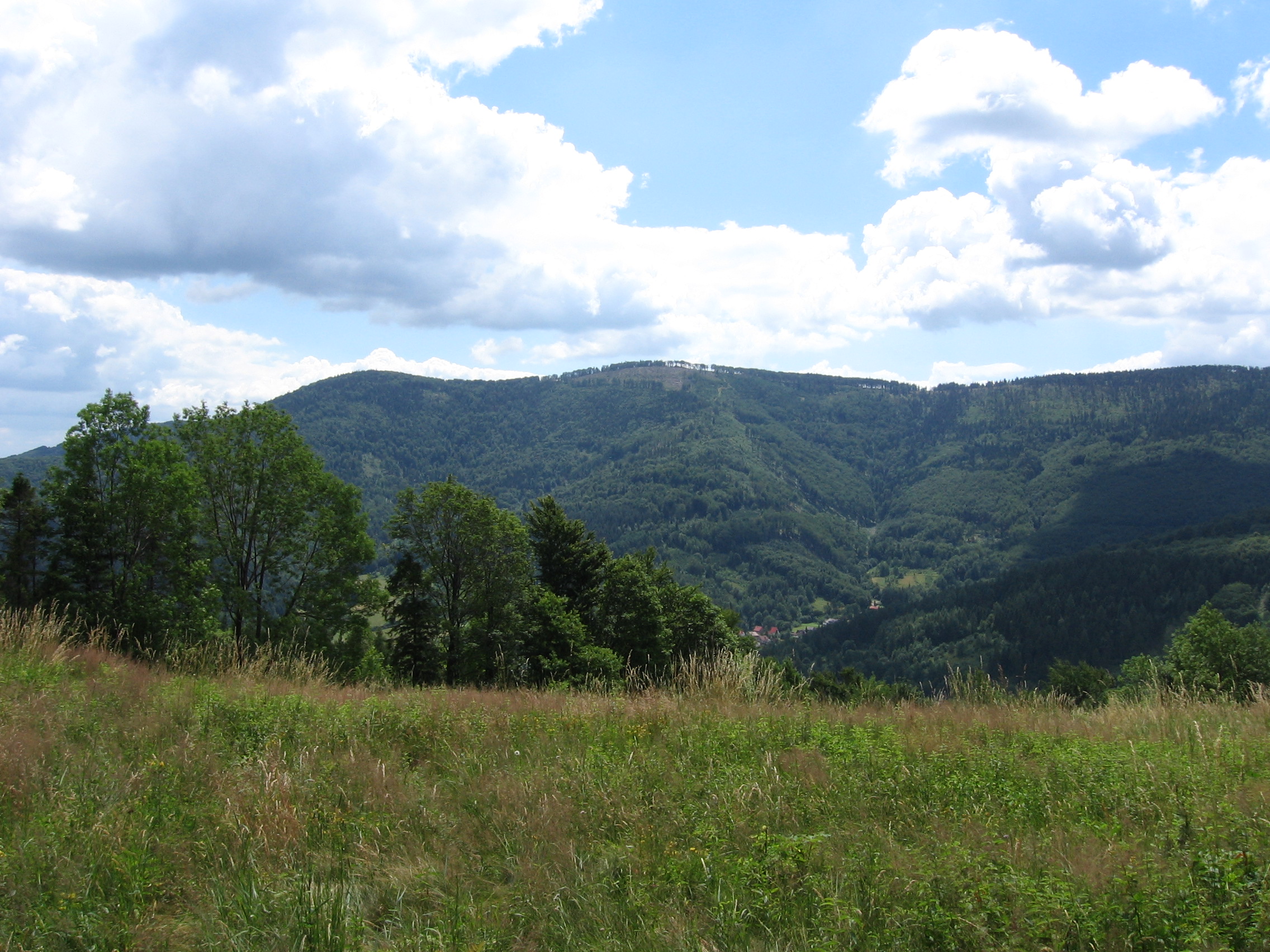Beskids
P1f1p5
The Beskids ( Beskid Polish, Czech and Slovak Beskids, Ukrainian Бескиди / Beskydy ) is a now rather only traditional name for the mountains in the Outer Western Carpathians and Eastern Carpathians. The Beskids are mainly in Poland and in the adjacent areas of the Czech Republic, Slovakia and Ukraine.
Name
The origin of the word is still unknown Beskid. The word comes either from a Slavic still a Germanic language. It is probable Thracian or Illyrian origin. The name comes in the Carpathian region and adjacent Balkans in the names of individual mountains (alone in Slovakia there are 50 such mountains ) and in the importance of mountain saddle before ( such as isolated today in Moravia ). The word is běščad / beščad related to the Slovak word (y) is still used in Eastern Slovakia (eg the mountain Beščad ) and in the form Bieszczady in eastern Poland in the Slovak form Beščad. In the Albanian language, there is the related word bjeshkë, which stands for a high pasture ( Alp ).
The word is also used as a family name, by the way today hot restaurants, hotels, companies, and even ocean-going vessels Beskid.
The terms Bieszczad and Beskid Historically used for centuries to describe the mountains that separate the poles of Ruthenia and the Kingdom of Hungary.
The colloquial term for Polish Bieszczady is Bies, majority Biesy ( which literally means Devil also ).
Characteristics
The Beskids are about 600 km long and 50-70 km wide arc that begins in Southeast Silesia and Moravia Northwest (at the Moravian Gate ), runs north of the Tatra Mountains and ends in Ukraine. He places forms the watershed between the tributaries of the Oder and the Vistula to the north and the East Slovak Lowland ( Great Hungarian Plain ) to the south.
Mean Beskydy, Krościenko on Dunajez, Poland
Low Beskid Mountains, Poland
Bieszczady, Bieszczady, Poland
Bieszczady, Bieszczady, Poland
Location
The eastern boundary of the Beskids is controversial. Older sources give the headwaters of the river Tisza in Ukraine, according to recent sources they end already on Uschokpass on the Polish- Ukrainian border.
Almost all of these Beskydy, except for the Low Beskids (Slovak Nizke Beskydy, Polish Beskid ) and the east of it located Beskydy belong to the ( exterior ) West Carpathians. The name Beskid carry almost all Carpathian Mountains in Poland, they are there but also in the Czech Republic ( Moravian-Silesian Beskydy, see below), in Slovakia ( Nizke Beskydy ) and in Ukraine ( Mountains in the Lviv region).
Structure
The Beskids are classified differently. As orographic subsystems, a distinction:
- Westbeskiden ( highest elevation: Babia Góra, 1725 m, Polish- Slovak border )
- Low Beskid Mountains ( highest elevation 1002 m Busov, Slovakia )
- Bieszczady ( highest elevation depending on the definition of the eastern border either Tarnica 1,348 m in Poland or Howerla 2060 m in the Ukraine). The Bieszczady begin doing with the Bieszczady in Poland and the Bukovské Hills in Slovakia. In this view also sometimes be referred to as the Bieszczady Forest Carpathian Mountains.
Alternatively, there are also a geomorphological structure in:
- Westbeskiden (about only to the city Čadca in Slovakia)
- Middle Beskid ( in front of the Pieniny Mountains )
- Bieszczady ( Pieniny to the Low Beskid )
- Low Beskids
- The Carpathians meet in this structure the Bieszczady from orographic division of the previous section.
The Beskydy in the narrower sense, the original name for:
- The Moravian- Silesian Beskids ( Czech Moravian-Silesian Beskydy, Beskids Slovak Moravskosliezske )
- Terms of area, small Silesian Beskids ( Czech Slezské Beskydy, Beskids Slovak Sliezske, Polish Silesian Beskid ) in Bielsko- Biała
- The small Slovak Beskids / Kysuce - Orava Beskids ( Czech and Slovak Slovenské Beskydy / Kysucko - Oravské Beskydy )
- Saybuscher Beskids (Polish Żywiec Beskid Mountains, near the town of Żywiec Żywiec German, the second highest mountain is here the Piľsko; are sometimes seen as part of the Slovak Beskids )
The group of the latter mountains wore as a whole in the past, various names, such as West Beskydy ( Západní Beskydy, Beskids Západné ), Silesian Beskid Mountains, Moravian-Silesian Beskids, Wallachian Beskids ( Beskid Valašské ) and Teschen Beskids ( Těšínské Beskydy, Těšínské Beskydy ).
Infrastructure
The region is famous for the tourism - apart from known centers of Westbeskiden such as Szczyrk - still relatively undeveloped. Larger cities are Bielsko -Biała and Nowy Sacz in Poland, as well as Uzhhorod in Ukraine.
Conservation
In the Beskid Mountains, there are three national parks, one at the Babia Góra in Poland ( National Park Babia Gora ), one in Pieniny in Poland and in Slovakia ( Pieniny National Park, abbr PIENAP ) and another on the Polish- Slovak- Ukrainian border.
In the Czech part of the Beskydy Protected Landscape Area 1973 ( Chranena krajinná oblast ) was Beskydy proclaimed that covers most of the Moravian-Silesian Beskydy Mountains, the mountain range Vsetínské Hills and the Javorník Mountains. With 116,000 hectares it is the largest conservation area in the Czech Republic. 50 small-scale areas are under special protection: 7 National nature reserves, 20 nature reserves and 23 natural monuments. At 70 % forests cover the area, which are not used in the core zones and develop forest character. But even the traditionally managed and semi-natural meadows and mountain pastures are ecologically valuable.
Culture
Examples of former "peasant culture" of the Middle Ages to 17 th century in the Carpathian foothills, the Wooden churches in Silesia and Northern Moravia are identical or very similar.
See also: Euro Beskydy region; Wooden Churches of Southern Little Poland
Personalities
The landscape of the Beskids was among other things the home of Gregory of Sanok, Martin Cromer, Ignacy Krasicki, Sigmund Freud, Kasimir Felix Badeni, Gregor Mendel, Leos Janacek, Emil Zatopek, Robert Maxwell, Nikifor, Billy Wilder, Isidor Isaac Rabi, Zdzisław Beksiński John Paul II, Adam Malysz.









